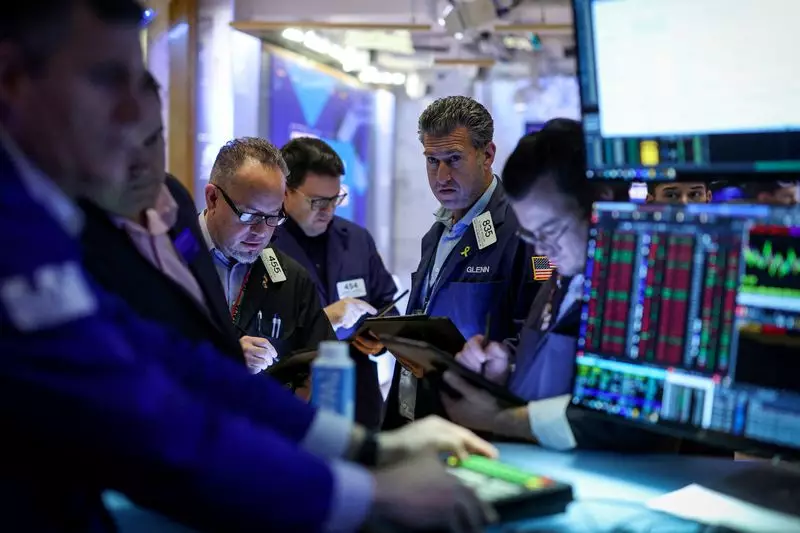The close of 2024 has left investors positively charged, with a significant uptick in stock performance marking a thrilling end to the year. However, as we transition into January 2025, various socio-economic forces, legislative changes, and investor sentiment are poised to drive market movements in significant ways.
U.S. stock markets have fared exceptionally well throughout 2024, with the S&P 500 posting a remarkable 25% increase by December 27. The Nasdaq Composite index also soared, breaking past the 20,000 mark for the first time. This impressive performance sets the tone for January; however, the stock market saw a slight decline recently due to profit-taking. Analysts suggest that this could herald a critical period of repositioning among investors as they strategize for the upcoming year.
“Market participants tend to reassess their portfolios at the start of a new year,” notes Robert Pavlik, a senior portfolio manager at Dakota Wealth. This tendency to realign investments could influence stock prices in the short term as funds shuffle to align with new expectations. This period of recalibration is not unusual; rather, it reflects the cyclical nature of investor behavior, particularly as the first few trading days of January typically embody a ‘Santa Claus rally’ effect—an uptick influenced by year-end sentiment.
With fresh economic data on the horizon, investors will closely watch the U.S. employment figures set to be released on January 10. These statistics provide invaluable insight into the economic climate, especially following a resurgence in job creation post-slump caused by natural disasters and strikes in previous months. Additionally, the forthcoming earnings reports for the fourth quarter will serve as a litmus test for corporate health and market resilience. Analysts are anticipating a 10.33% earnings growth in 2025, reflecting tempered optimism compared to an expected 12.47% growth for 2024.
The market’s trajectory will likely be shaped by broader economic policies under the incoming Biden administration. The expectations surrounding potential tax reforms and regulatory changes aim to bolster corporate profits—a critical driver for market performance. Michael Rosen, chief investment officer at Angeles Investments, expressed cautious optimism, asserting that lower taxes and streamlined regulations could enhance profitability across multiple sectors.
Joe Biden’s inauguration on January 20 will usher in a range of new economic policies that may ripple through the markets. Research suggests that the first days of Biden’s presidency could initiate a flurry of executive orders targeting various sectors, including immigration policies and trade relations. The forthcoming hurdles from potential tariffs on imports from China and North America could also alter the economic landscape, creating pressure on corporations to adjust pricing strategies in response to increased operational costs.
In this charged atmosphere, Helen Given from Monex USA points out that new administrations always introduce uncertainty. The full scope of Biden’s policies, especially concerning international trade, might not be swiftly absorbed by the market, heightening the potential for volatility. Financial analysts will surely be scrutinizing the impacts on key currencies like the euro, Canadian dollar, Mexican peso, and Chinese yuan as they react to the new trade dynamics.
As the Federal Reserve holds its first monetary policy meeting of the year in late January, financial markets may face another challenge. The recent interest rate cuts have led to both optimism and concern among investors, reflecting a duality of sentiment regarding future corporate profitability. Any signals from the Fed regarding interest rates or inflation could spark notable market reactions. The Fed’s hesitation to further reduce rates might disappoint certain investor factions hoping for immediate boosts to corporate profitability and stock valuations.
Conversely, the outlook for alternative assets, including cryptocurrencies, seems more favorable. The anticipated pro-crypto stance of the Biden administration is seen as a potential buoy for the crypto markets. As sentiments shift, investors may look more favorably upon alternative investment vehicles, indicating that while risks may permeate traditional stocks, digital currencies might also experience significant interest.
With a potent mix of economic data, corporate earnings reports, and incoming government policies, January 2025 is set to be pivotal in shaping market directions. Investors face an unpredictable environment filled with opportunity while remaining cautious of potential pitfalls. The coming weeks will be crucial as markets respond to changing narratives and unfolding events. The landscape is complex, and engaging with these dynamics will require astute awareness and nimble strategies to navigate potential market shifts.

